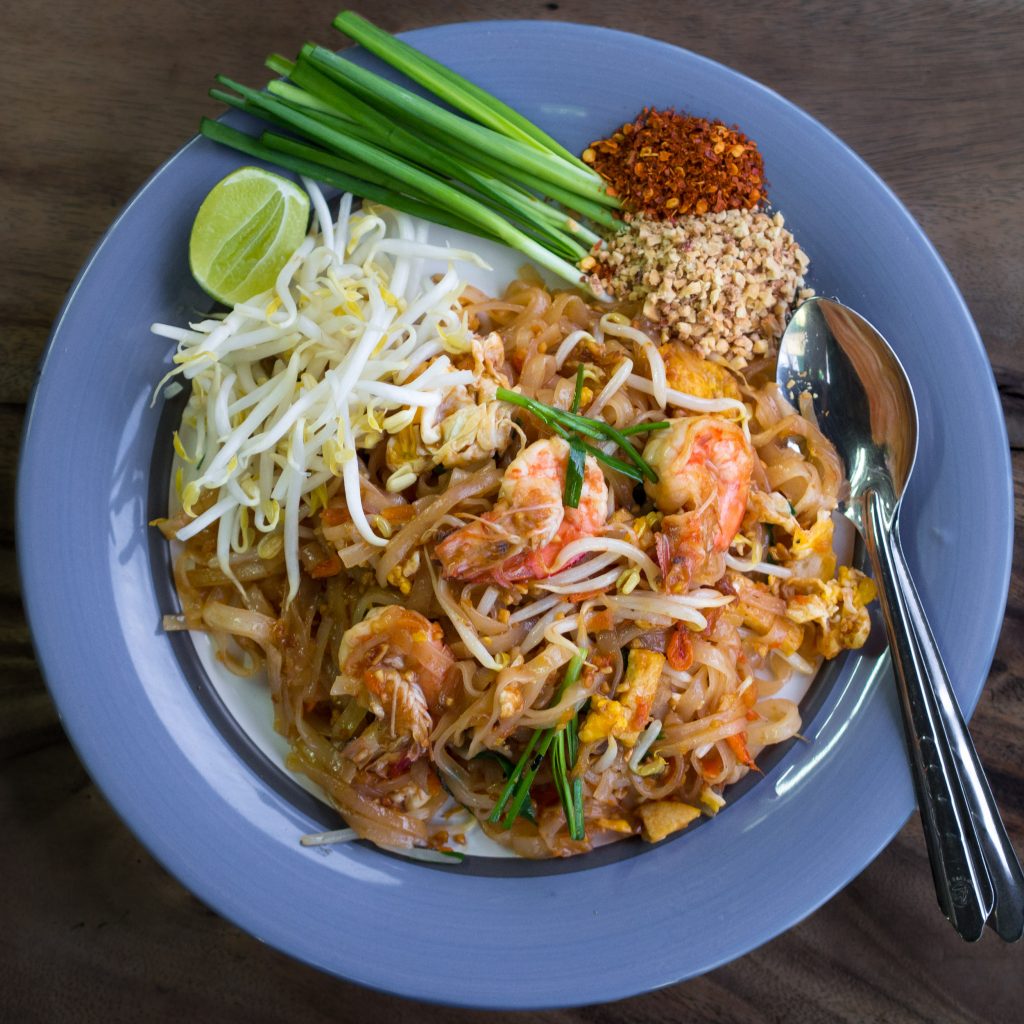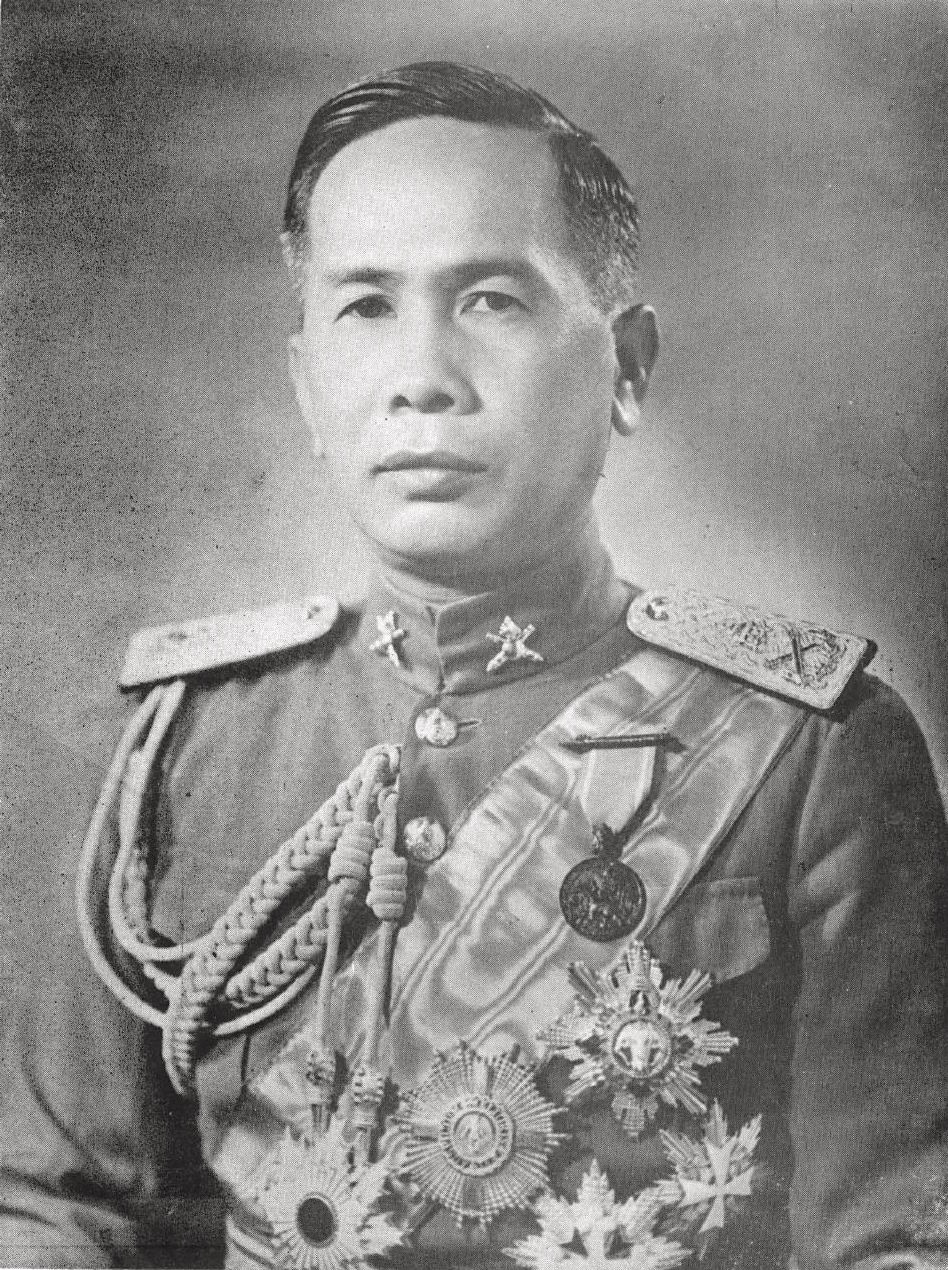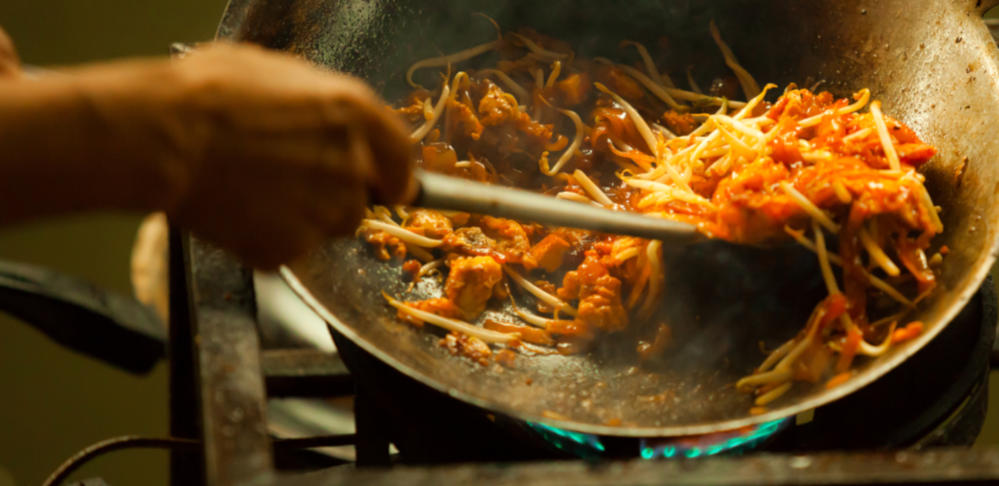Pad Thai: Love, to the Noodles of Thailand
Tangy, sweet, and perfectly delicious: there is no denying the international love for Pad Thai. But, the origin of Thailand's most iconic dish might surprise you.

Pad Thai (cr. wikipedia)
In his Thai classic novel The Four Reigns, author M.R. Kukrit Pramoj describes an incident in which Thai people were compelled to eat noodles during World War II. “I am so tired of all this noodle propaganda,” a character named Pherm opines. Anh, his brother, observes, “Nowadays, the authorities require that all state officials in all divisions and departments cook noodles for sale as a way to support the government’s policy.” Such was, indeed, the socio-political landscape of Thailand during the time the now-renowned Pad Thai dish was born. Indeed, Pad Thai did not come about without a bureaucratic helping hand.
Origins of Pad Thai
The word Pad Thai might bring to mind only a hazy idea of an à la carte dish to those unfamiliar with Thai cuisine, and maybe something more specific to those who like Thai food. However, to Thais who are aware of its history, this name conveys a significant meaning underlying Thai-ness, which was an essential concept at the time the dish was founded in the 1930s during the premiership of ultranationalist Field Marshal Plaek Phibunsongkhram. “Phibun,” as he is better-known in western media, was the Prime Minister of Thailand, and, until this day, remains one of the most well-known political figures in Thai history. Educated in the West, Phibun believed that following western conceptions of modernization would ensure Thailand’s modernity and independence against threats of colonialization. As Prime Minister, he set off on a nationalizing agenda that included the birth of Pad Thai, which started off with humble beginnings: it was a dish his housekeeper had invented in his kitchen.
Phibun brought Pad Thai into the public eye, with a goal of unifying the Thai people in a mass-culturalization project. During an era when threats of colonialization pervaded Southeast Asia, Phibun believed that a symbol, which became this dish, could be integral to Thai people’s pride and communal strength.

Field Marshall Plaek Pibhunsongkhram (cr. wikipedia)
When it was introduced, the dish, which may have been influenced by Mi Phat Korat, another dry-noodle dish, was called a longer name – Guay Tiew Pad Thai – literally “stir-fried Thai noodles.” Guay Tiew is the Teochew Chinese word for noodles, which had been introduced to then-Siam by Chinese immigrants, specifically the Teochew, who made up the majority of the Thailand’s Chinese population. Among their cultural imports were noodles served in piping hot soup, but Thais had not taken to those so well, for they were viewed as too hot. Most Thai people preferred noodles with only a little soup or noodles without soup (“dry”).
Pad Thai is the result of an evolution of Thai tastes on a Chinese ingredient and a Korat dish. Some of its ingredients, including the famous garnishing – bean sprouts – are not at all common in regions heavily influenced by Chinese cuisine, such as Hong Kong, Singapore, and Taiwan, or even in China itself – but it is essential for cooking and garnishing Pad Thai.
How to Make Pad Thai
An ideal Pad Thai should be an exquisite dish to make. A perfectly made Pad Thai should be the amalgamation of many ingredients, and the product of time-consuming preparative tasks. A decent Pad Thai requires, among its many steps, the slicing of radish, the dicing of hard tofu, the roasting and pounding of peanuts and pepper, and – perhaps the most excruciating but rewarding of all – the making of a tamarind sauce. A traditional Pad Thai recipe blends sour, salty, and sweet through these ingredients. If the Koreans have their own traditional sauce so important that people back then had to marinate it in enormous storage jars, such as was shown in the globally popular series Dae Jung Geum, then Thais have their tamarind paste.
Sourness in Pad Thai has two shades: extreme and mellow. While the former can be tasted in the vegetables that are served on the side, the latter lies inside the noodles covered with the tamarind paste. Some kinds of sourness, but not the tamarind paste’s, can be made from substitutable ingredients. A lime, for example, is traditionally sliced and served along with the dish, but if lime becomes expensive, several other fruits can be used as its substitutes as well – bilimbi, Madan fruit, raw mango, and star fruit, for instance. (That said, it is the light green juicy pulp of the lime contrasting with the dark green peel that can attract many hungry passers-by to sit down and eat a Pad Thai.) The important sourness aside, there are two other vital tastes of Pad Thai: salty and sweet. The saltiness results from fish sauce – a potent ingredient that needs to be used sparingly, since radish and dried shrimp are already salty – and the sweetness comes from coconut sugar, toddy palm, or sugar cane.

Pad Thai cooking (cr. MeanderingTales.com)
The preparation of Pad Thai takes a long time, but the cooking itself is quick. A traditional Pad Thai recipe would include the following ingredients: Pork skin (to make lard and pork crackling), red chilies, red onions, dried shrimps, yellow (hard) tofu, pickled radish, roasted peanuts, noodles, “three-flavor sauce” (stewed from tamarind paste, toddy palm sugar, and fish sauce), noodles, egg, and chives. The recipe might read as follows:
Fry pork skin until lard appears. Pick out the pork crackling and leave one and a half tablespoons of lard in pan. Pound dried red chilies and red onions coarsely. Fry them in the pan until fragrant. Add dried shrimps. Dice yellow tofu and pickled radish and coarsely pound roasted peanuts. Stir-fry until fragrant. (The pounded peanuts can also be put beside the noodles in the final plating – what is most important is that they are roasted.) Add soaked noodles and three-flavored sauce. Mix well until the noodles are fully coated with the sauce. Create a space in the middle of the noodles and add about one tablespoon of the lard. Crack an egg into the space, beat the egg yolk, and stir-fry with the noodles. Add chopped chives, bean sprouts without roots, and, if needed, pork crackling. Stir-fry everything together. Serve the dish with pork crackling. It is recommended to add only a little of the pork crackling, for your good health.
Regions of eastern coastal Thailand have their own special recipe, simmering minced blue crab meat and sliced pork belly to make a gravy known as “palo,” which they then cook the noodles with. This style of Pad Thai uses fewer ingredients than the one commonly found in central Thailand. They also use a different kind of noodle – not Guay Tiew but Sen Chan, which are thinner rice noodles. This dish is sometimes known as Pad Thai Sen Chan, and the recipe might read as follows:
Pound dried red chilies, red onions, garlic, and galangal in a mortar until finely combined. Heat up pan before adding two tablespoons of lard and pounded ingredients. Stir-fry until fragrant. Add blue crab, chopped into two or four parts, depending on the crab’s size, and diced pork belly. Continue to stir-fry. Season with tamarind paste, cane sugar or palm sugar, and fish sauce. If the paste is too thick, add a little bit of water. Stew for half an hour until boiled. Add sen chan noodles and mix until noodles are soft, brown, and fully coated with sauce. Add bean sprouts (without roots) and chopped chives of half-inch lengths. Mix briefly with noodles. Quickly plate to prevent vegetables from withering.
Fun Facts About Eggs in Pad Thai
In the past, people who wanted to have Pad Thai with eggs usually brought their own eggs. They believed this was the more economical way to add an enjoyable taste to the dish. (Duck eggs were preferable to chicken eggs at the time.) Before adding some eggs, the chef had to use a spatula to create an empty space in the middle of the noodles and pour a little bit of lard in. While this practice allowed diners to add their eggs in for free for a while, cooks began to charge customers for bringing their own eggs, claiming it was the cost of the lard needed to cook it.
The origin of eggs as an add-on is still unclear, and whether this practice has anything to do with western culture still remains a mystery. Nevertheless, it is likely that the addition of eggs gave birth to two popular options of Pad Thai: With-Eggs and With-Egg-Wrap. Of course, the latter came later, possibly due to a need to make the dish fancier or to increase its popularity among foreign tourists, although it also eventually became popular amongst Thais.
Reference
Kanokpongchai, Sang-arun., “ [ผัดไทย ก๋วยเตี๋ยวสยามสะท้อนการลงแรงมากกว่าลงเงิน].” Watthanatham Journal:Department of Cultural Promotion, yr. 51, no. 2, July – September. 2012, pp. 60 – 67. Retrieved April 1, 2021. Link: http://magazine.culture.go.th/2012/2/files/assets/basic-html/index.html#page62


